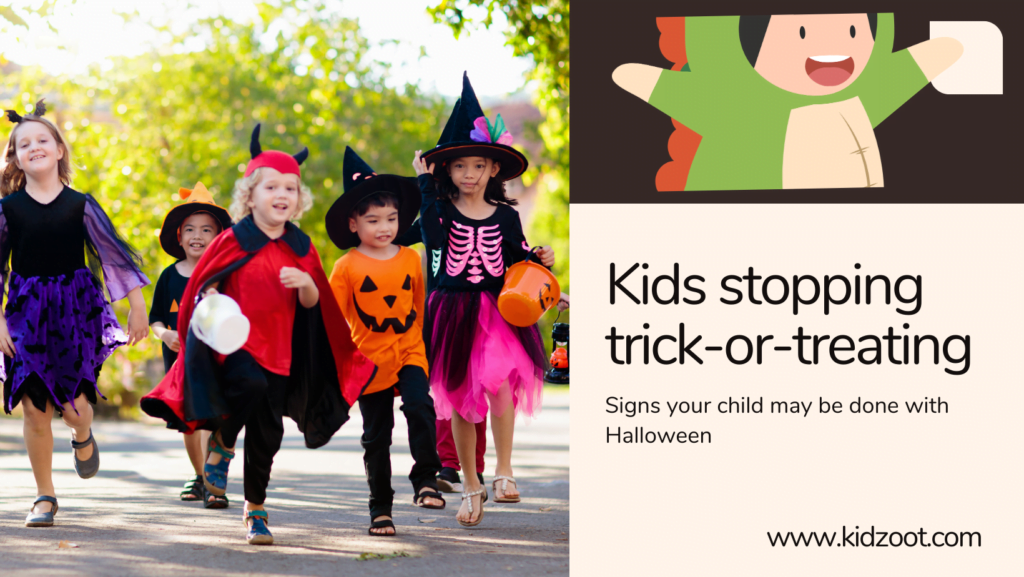Most children naturally lose interest in trick-or-treating between ages 11-13, as they enter middle school. However, there is no set age when kids must stop, and many continue enjoying the tradition through their teenage years. The decision to stop trick-or-treating should be based on the individual child’s interests and maturity level rather than an arbitrary age cutoff.
Factors Influencing the Transition
The shift away from trick-or-treating is influenced by various factors. As children enter adolescence, they may feel pressure from peers or society to act more “grown-up” and give up activities perceived as childish. Some preteens and teens worry about being judged for trick-or-treating at their age. Many older kids and teens naturally lose interest as they develop new hobbies and social activities, preferring Halloween parties or scary movie nights with friends instead.
Family traditions play a significant role, with some families encouraging participation well into the teenage years, while others phase out trick-or-treating earlier. Community norms also vary, with some neighborhoods welcoming trick-or-treaters of all ages, while others discourage older participants.
As kids mature, they may feel ready to take on more adult roles on Halloween, like handing out candy or supervising younger siblings. However, continuing to trick-or-treat can have benefits. It allows older kids and teens to maintain a connection to childhood joy in a world that often rushes them to grow up. For parents, it provides a relatively safe, supervised activity compared to some alternatives like unsupervised parties.
Trick-or-treating gets kids out interacting with neighbors and participating in community life – increasingly rare experiences for many young people. It also allows for creative expression through costume design and character portrayal. The physical activity of walking around the neighborhood provides exercise and fresh air, while family trick-or-treating offers quality bonding time and shared memories.
Navigating the Transition
While there’s no universal “right” age to stop, there are some signs it may be time to transition away from trick-or-treating. These include a genuine loss of interest, inability to follow proper trick-or-treating etiquette, safety concerns in certain areas, community-established age limits, or when academic, extracurricular, or work responsibilities make trick-or-treating impractical.
As children outgrow trick-or-treating, many fun alternatives allow them to still participate in Halloween. These include costume parties, visiting haunted houses or Halloween events, scary movie marathons, volunteering at community events, passing out candy to younger trick-or-treaters, participating in pumpkin carving or decorating contests, enjoying Halloween-themed game nights, or accompanying younger siblings while trick-or-treating.
Parents can navigate this transition by maintaining open communication about their child’s feelings regarding trick-or-treating and exploring their preferences for celebrating Halloween. It’s important to respect a child’s decision if they feel ready to stop, without pressuring them to continue. Offering alternative ways to celebrate that align with their current interests and maturity level can help ease the transition.
If older kids or teens do continue trick-or-treating, discussing appropriate behavior and establishing clear guidelines is crucial. Families can also create new Halloween traditions that can carry into adulthood, like annual pumpkin carving or cooking special treats. Recognizing that kids’ interests may fluctuate from year to year, allowing flexibility in participation can be helpful.
Conclusion
There’s no definitive age when children should stop trick-or-treating. The decision depends on individual maturity, interests, and family values. While many kids naturally outgrow the activity in their preteen or early teen years, others continue to find joy in the tradition throughout adolescence.
The key is to respect each child’s personal journey and help them find meaningful ways to celebrate Halloween that align with their developmental stage. By focusing on the core elements of creativity, community, and festivity that make Halloween special, families can ensure the holiday remains a source of fun and connection even as children grow older.
Ultimately, Halloween is about more than just collecting candy. It’s an opportunity for self-expression, community engagement, and creating lasting memories. Whether through trick-or-treating or other activities, the goal should be to preserve the spirit of the holiday in ways that resonate with each child’s evolving interests and maturity level.

